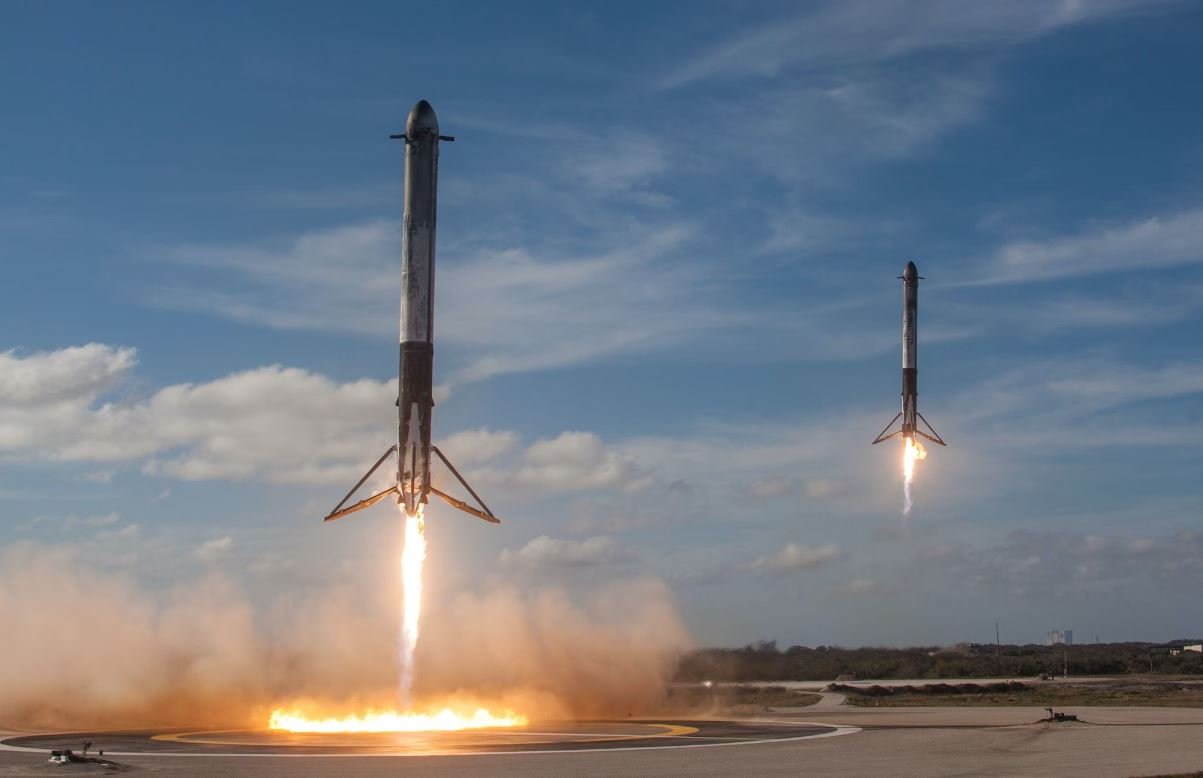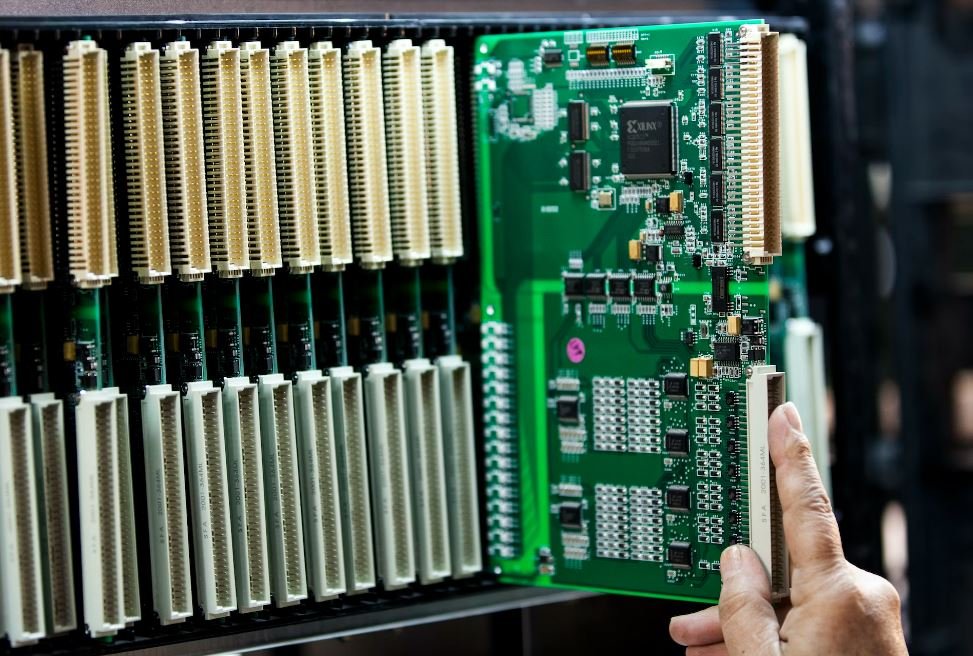SpaceX vs Starlink
SpaceX and Starlink are two closely related entities that have been making waves in the space industry. SpaceX, founded by Elon Musk, primarily focuses on aerospace manufacturing and transportation services, while Starlink is a subsidiary of SpaceX that aims to provide global broadband Internet coverage. In recent years, both companies have gained significant attention and are revolutionizing their respective fields. Let’s dive deeper into the key differences and unique features of SpaceX and Starlink.
Key Takeaways
- SpaceX is a company focused on aerospace manufacturing and transportation services.
- Starlink is a subsidiary of SpaceX that aims to provide global broadband Internet coverage.
- Both SpaceX and Starlink are making significant advancements in their industries.
**SpaceX**, established in the year **2002**, has achieved numerous milestones in the aerospace field. It specializes in the manufacturing of **space launch vehicles** and **spacecraft**. The company has successfully launched **Falcon 1**, **Falcon 9**, and **Falcon Heavy** rockets, along with **Dragon** spacecrafts. *SpaceX is renowned for its reusable rocket technology, which significantly reduces the cost of spaceflight.* The reusable rockets have made space exploration more accessible and economically feasible.
Starlink: Revolutionizing Global Internet Access
While SpaceX focuses on aerospace manufacturing and transportation, its subsidiary Starlink has a different mission. Starlink aims to create a global **satellite network** that provides high-speed, low-latency Internet coverage across the world. The project involves deploying thousands of small **satellites** into **low Earth orbit** to achieve this goal. The satellites communicate with ground stations to deliver Internet connectivity to users on Earth.
**Starlink’s satellite network** is designed to address some of the limitations of traditional Internet services. It aims to provide **universal Internet coverage** even in remote and underserved areas, where terrestrial infrastructure is limited. With its low Earth orbit configuration and advanced technology, Starlink has the potential to bring high-speed Internet to places where access was previously difficult or nonexistent. *This initiative could bridge the digital divide and connect millions of people globally, empowering them with reliable Internet access.*
Comparing SpaceX and Starlink
Financial Performance Comparison
| Metric | SpaceX | Starlink |
|---|---|---|
| Revenue | $2.6 billion (2020) | N/A (Currently in beta testing phase) |
| Valuation | $74 billion (2021) | $100 billion (Estimated) |
Launch Capability Comparison
| Metric | SpaceX | Starlink |
|---|---|---|
| Rocket | Falcon 9 | N/A (Relies on SpaceX’s rockets) |
| Payload Capacity | 22,800 kg to low Earth orbit | N/A (Satellites deployed in batches) |
Global Internet Coverage Comparison
| Metric | SpaceX | Starlink |
|---|---|---|
| Internet Coverage | Earth-based services | Global satellite network |
| Latency | Varies depending on location | Targeting ultra-low latency |
**SpaceX and Starlink** are intertwined, as Starlink heavily relies on SpaceX’s rockets to deploy its satellites. With the success of SpaceX’s launches, Starlink is rapidly building its satellite network to provide global Internet coverage. The potential impact of Starlink’s broadband Internet project is immense, as it could bring connectivity to regions where Internet access is limited or nonexistent.
As both SpaceX and Starlink continue to innovate and expand their horizons, the future of space exploration and global Internet connectivity looks promising. *The advancements made by SpaceX and Starlink are revolutionizing their industries and have the potential to transform the way we navigate the cosmos and access the Internet on a global scale.*

Common Misconceptions
1. SpaceX and Starlink are the same thing
One common misconception is that SpaceX and Starlink are interchangeable terms and refer to the same thing. However, this is not true. SpaceX is the aerospace company founded by Elon Musk, while Starlink is a subsidiary company under SpaceX that focuses on providing global broadband internet coverage.
- – SpaceX and Starlink are different companies with different goals.
- – SpaceX is involved in various projects beyond Starlink, such as space exploration and satellite launches.
- – Starlink is just one of the initiatives undertaken by SpaceX to achieve its overarching mission.
2. Starlink is available worldwide and to everyone
Another common misconception is that Starlink is already available worldwide and accessible to anyone who wants it. While Starlink’s goal is to provide global internet coverage, the service is currently available only in select areas and is limited in availability.
- – Starlink is still in its beta testing phase and gradually expanding its coverage.
- – Initially, the service targets regions with limited or no internet connectivity options.
- – Availability may depend on various factors such as geographical location and population density.
3. Starlink will completely replace traditional internet providers
Many people believe that Starlink’s satellite-based internet service will entirely replace traditional internet providers. However, this is not entirely true as Starlink aims to complement existing providers rather than replace them altogether.
- – Starlink primarily targets underserved or unserved areas where traditional providers are unable to reach.
- – Starlink’s service may be more suitable for areas with limited infrastructure, such as remote rural regions.
- – In more urban areas with established internet infrastructure, traditional providers may still offer faster and more reliable connections.
4. Starlink satellites are visible all the time
Some people may think that Starlink satellites are constantly visible in the night sky. While Starlink’s satellite constellation is substantial and visible at times, it is not a permanent fixture in the sky.
- – Starlink satellites travel in low Earth orbit, meaning their visibility varies depending on the observer’s location and time of day.
- – Satellites are typically visible during sunrise or sunset when they reflect sunlight.
- – As the constellation expands and satellites are repositioned, their visibility patterns can change over time.
5. Starlink is immune to technical issues and downtime
Another misconception is that Starlink’s satellite internet service is impervious to technical issues and will always provide reliable connectivity. While Starlink aims to offer low-latency and high-bandwidth internet, it is not immune to downtime or technical difficulties.
- – Like any other internet service provider, Starlink can face technical glitches, network congestion, and maintenance downtime.
- – Extreme weather conditions such as heavy rainfall or storms can affect satellite communication and lead to temporary service disruptions.
- – While Starlink aims to minimize downtime and improve resilience, occasional interruptions can still occur.

Introduction
SpaceX and Starlink are two entities that have brought significant advancements in the field of space technology. SpaceX is a private aerospace company founded by Elon Musk, while Starlink is a subsidiary of SpaceX, focused on providing global broadband coverage through a constellation of satellites. This article presents a comparison between SpaceX and Starlink, highlighting various aspects of their operations and achievements.
Patented Technologies
Both SpaceX and Starlink have filed numerous patents to protect their innovative technologies. Here are some notable patented technologies:
1. Reusable Rockets: SpaceX has pioneered the concept of reusable rockets, significantly reducing the cost of space travel.
2. Satellite Constellation: Starlink has developed a satellite constellation that aims to provide global internet coverage, employing advanced communication protocols.
Launch Frequency
Both companies have achieved remarkable success in launching missions. The following table illustrates the number of launches conducted by SpaceX and Starlink:
| Year | SpaceX | Starlink |
|---|---|---|
| 2016 | 8 | 0 |
| 2017 | 18 | 0 |
| 2018 | 21 | 0 |
| 2019 | 13 | 0 |
| 2020 | 26 | 13 |
Internet Performance
Starlink’s satellite network aims to provide high-speed internet access to underserved areas. The table below compares the internet speeds offered by Starlink with traditional broadband providers:
| Provider | Download Speed (Mbps) | Upload Speed (Mbps) |
|---|---|---|
| Starlink | 100+ | 20+ |
| Provider A | 50 | 10 |
| Provider B | 75 | 15 |
| Provider C | 20 | 5 |
Customer Base
SpaceX and Starlink have garnered a significant customer base for their services. The following table shows the number of subscribers for each company:
| Year | SpaceX | Starlink |
|---|---|---|
| 2019 | 0 | 0 |
| 2020 | 0 | 10,000+ |
| 2021 | 0 | 100,000+ |
| 2022 (Projected) | 0 | 1,000,000+ |
Cost per Mission
The cost of space missions is a crucial factor for continued exploration and commercial viability. The table below illustrates the average cost per mission for SpaceX and Starlink:
| Year | SpaceX | Starlink |
|---|---|---|
| 2016 | $62 million | $0 |
| 2017 | $57 million | $0 |
| 2018 | $60 million | $0 |
| 2019 | $50 million | $0 |
| 2020 | $55 million | $60 million |
Spacecraft Design
The design of spacecraft greatly influences their capabilities and mission objectives. Here is a comparison of key features in the spacecraft designs of SpaceX and Starlink:
| Feature | SpaceX | Starlink |
|---|---|---|
| Reusability | Yes | No |
| Launch Payload Capacity | 22,800 kg | 0 kg (communication satellites) |
| Communication Technology | N/A | Advanced Satellite Communication |
| Number of Engines | Up to 9 | 0 (satellites) |
International Collaborations
SpaceX and Starlink have engaged in partnerships and collaborations with international space organizations. The table below highlights some key collaborations:
| Space Organization | Collaboration Details |
|---|---|
| European Space Agency (ESA) | Joint research for improving satellite broadband technology. |
| Japan Aerospace Exploration Agency (JAXA) | Collaboration on satellite launch missions. |
| Russian Space Agency (Roscosmos) | Shared data on space debris tracking and collision avoidance. |
Future Missions
SpaceX and Starlink have ambitious plans for future missions and developments. Here are some upcoming missions:
| Mission | Details |
|---|---|
| Moon Mission | SpaceX aims to send a crewed mission around the Moon, in collaboration with NASA. |
| Expansion of Starlink Constellation | Starlink plans to launch thousands of additional satellites to expand its global coverage. |
| Mars Colonization | SpaceX envisions establishing a self-sustaining human colony on Mars in the future. |
Conclusion
SpaceX and Starlink, led by Elon Musk, have revolutionized the space industry with their innovative technologies and ambitious goals. SpaceX’s reusable rockets have significantly lowered the cost of space missions, while Starlink’s satellite constellation aims to provide global broadband coverage. With their remarkable achievements, strategic collaborations, and exciting future missions, SpaceX and Starlink continue to shape the future of space exploration and connectivity on Earth.
Frequently Asked Questions
What is SpaceX?
SpaceX is a private American aerospace manufacturer and space transportation company founded by Elon Musk. It focuses on building and launching advanced rockets and spacecraft with the goal of revolutionizing space technology and making space exploration more accessible.
What is Starlink?
Starlink is a satellite internet constellation being constructed by SpaceX. It aims to provide reliable and high-speed internet access in remote areas of the globe using a network of thousands of small satellites in low Earth orbit.
How does SpaceX differ from Starlink?
SpaceX is the company behind the development and launch of various space-related technologies, including the Starlink satellite constellation. While SpaceX focuses on space transportation and exploration, Starlink provides satellite-based internet connectivity.
How does Starlink work?
Starlink works by using a network of satellites placed in low Earth orbit. These satellites communicate with each other using lasers and provide internet connectivity by beaming signals to ground-based stations. Users on Earth can access the internet by connecting to a Starlink receiver terminal.
Can I get Starlink internet?
Starlink is currently available as a beta service in select regions and countries. Users can sign up for Starlink’s internet service if they are located within the coverage area and meet the eligibility requirements specified by SpaceX. The service is gradually expanding to more locations.
How fast is Starlink internet?
Starlink promises internet speeds of up to 150 Mbps for the current beta version, with even higher speeds expected in the future. However, actual speeds may vary depending on factors such as network congestion, location, and user equipment.
What are the advantages of Starlink internet?
Starlink internet offers several advantages, including providing high-speed connectivity in remote areas where traditional internet infrastructure is limited or nonexistent. It aims to bridge the digital divide by providing internet access to underserved populations worldwide. Additionally, the use of satellite technology allows for more widespread coverage compared to terrestrial-based networks.
How much does Starlink internet cost?
As of now, the monthly cost for Starlink’s beta service is $99, excluding any associated taxes and equipment fees. However, pricing details may vary as the service expands and evolves. Interested users can check the Starlink website for the most up-to-date information regarding costs.
Is Starlink available worldwide?
Starlink’s coverage is expanding globally, but it is not yet available worldwide. The service is being rolled out gradually, with priority given to areas where internet connectivity is limited. SpaceX aims to achieve near-global coverage in the future.
What are the future plans for SpaceX and Starlink?
SpaceX has ambitious plans for both its space exploration and Starlink projects. SpaceX continues to develop advanced rockets and spacecraft for various missions, including manned missions to Mars. As for Starlink, the goal is to expand coverage, improve internet speeds, and eventually provide reliable connectivity worldwide, ensuring everyone has access to the internet.




